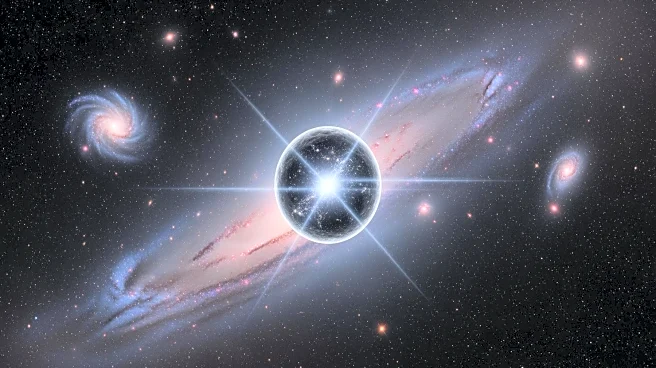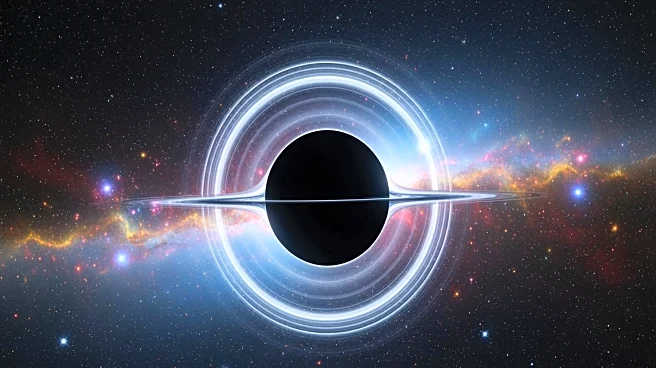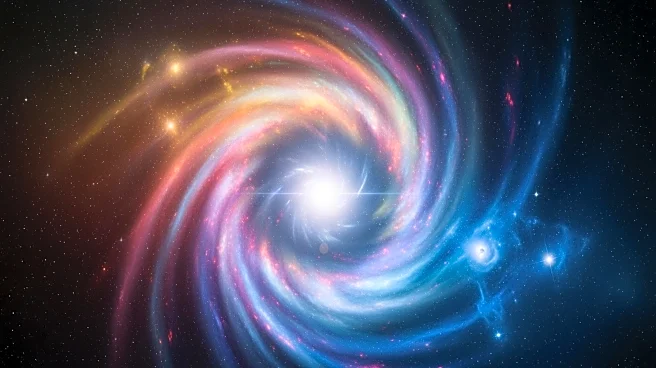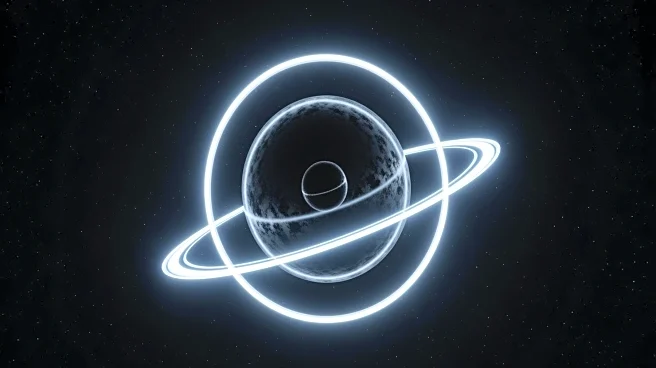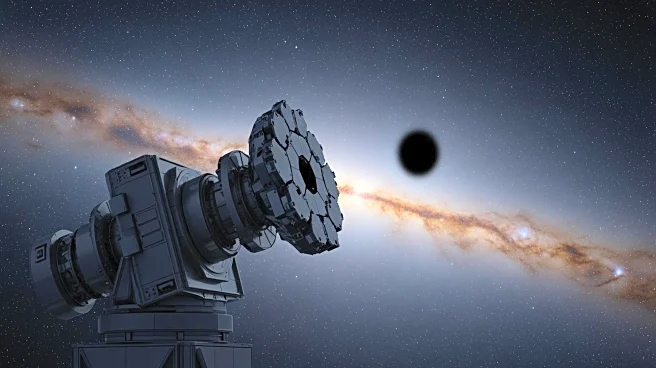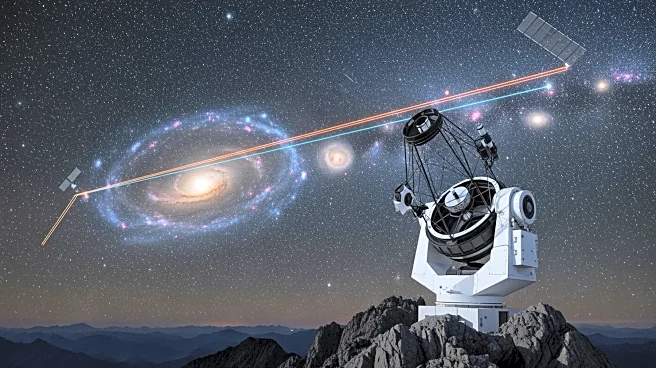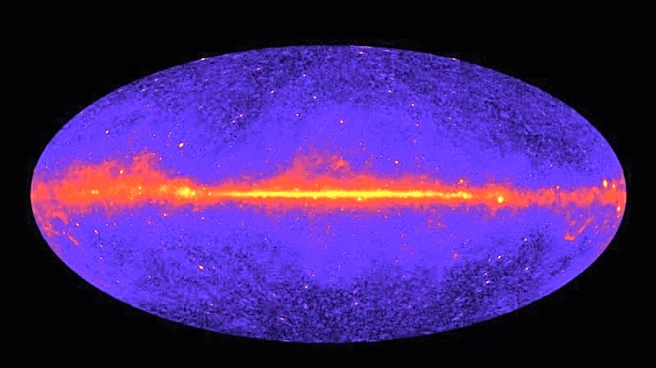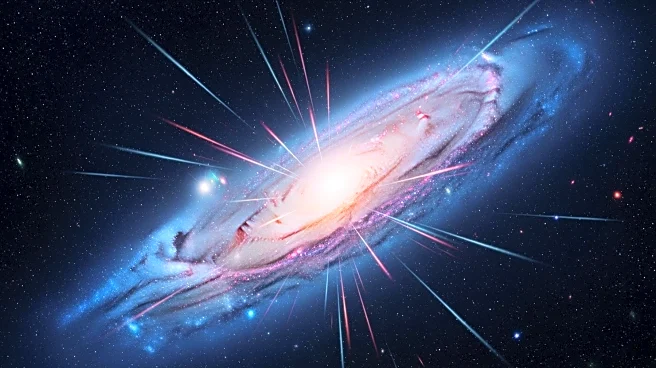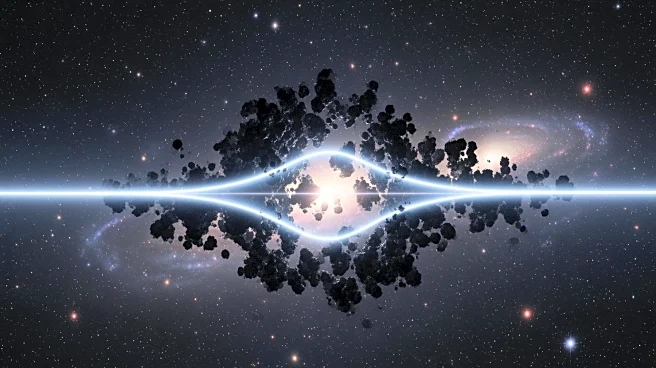What's Happening?
Researchers are making strides in confirming the existence of dark matter, which is believed to constitute over a quarter of the universe. By studying gamma rays near the center of the Milky Way, scientists are exploring two main hypotheses: that these gamma rays are produced
by colliding dark matter particles or by millisecond pulsars, which are rapidly spinning neutron stars. A recent analysis suggests that both explanations are equally plausible, with dark matter potentially being indirectly detected through these gamma-ray emissions. This research is significant as dark matter, which does not emit, absorb, or reflect light, has been challenging to detect directly.
Why It's Important?
Confirming the existence of dark matter would be a monumental breakthrough in physics, providing insights into the fundamental composition of the universe. Dark matter's gravitational effects are crucial for understanding cosmic structures, and its confirmation could lead to new physics beyond the current understanding. The research also underscores the importance of advanced observational technologies, such as the Fermi Gamma-ray Space Telescope, in exploring cosmic phenomena. The potential confirmation of dark matter could have far-reaching implications for theoretical physics and cosmology, influencing future research directions and technological developments.
What's Next?
The Cherenkov Telescope Array Observatory, currently under construction in Chile, is expected to play a pivotal role in distinguishing between the gamma-ray emissions from dark matter and millisecond pulsars. Once operational, possibly by 2026, this observatory could provide definitive evidence supporting one of the hypotheses. The scientific community eagerly anticipates these findings, which could either confirm the presence of dark matter or necessitate a reevaluation of existing theories. Continued advancements in observational technology and data analysis will be critical in resolving this cosmic mystery.
